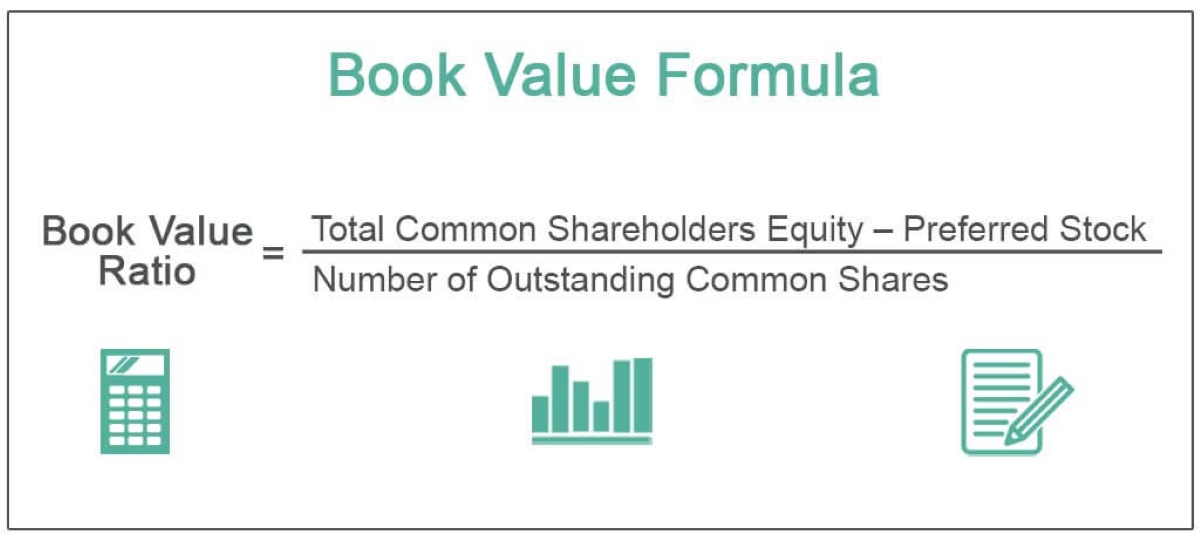
The book value of an organisation is computed after netting the aggregate book value of all the assets against its intangible counterparts and liabilities. If it’s obvious that a company is trading for less than its book value, you have to ask yourself why other investors haven’t noticed and pushed the price back to book value or even higher. The P/B ratio is an easy calculation, and it’s published in the stock summaries on any major stock research website. There are a number of other factors that you need to take into account when considering an investment. For example, the company’s financial statements, competitive landscape, and management team.
Book Value versus Market Value
There is also a book value used by accountants to value the assets owned by a company. This differs from the book value for investors because it is only used internally for managerial accounting purposes. Yes, if a company’s liabilities exceed its assets, the BVPS can be negative, signaling potential financial distress. According to conventional accounting approaches, most assets’ values are represented as per their historical figures. It does not account for the actual depreciation and appreciation in values of assets but instead is based on set accounting principles. This phenomenon creates a discrepancy and compromises analysis based on book value.
Price-to-Book (P/B) Ratio

Intangible assets are those that lack physical substance, thus making their valuation a more difficult undertaking than the valuation of tangible assets. Market capitalisation is the product between the total number of outstanding shares of an organisation and its current market price. Generally, the book value per share is used by investors (especially value investors) to determine whether a share is fairly valued. If the BVPS is less than the price of the stock, then that tells an investor that the stock could be overvalued—it costs more than the assets it’s entitled to. On the other hand, when the BVPS is more than the stock price, that means an investor can essentially buy a share in a company’s assets for less than those assets are actually worth. Book value is the amount found by totaling a company’s tangible assets (such as stocks, bonds, inventory, manufacturing equipment, real estate, and so forth) and subtracting its liabilities.
How to Interpret BVPS?
Clear differences between the book value and market value of equity can occur, which happens more often than not for the vast majority of companies. With those three assumptions, we can calculate the book value of equity as $1.6bn. If relevant, the value of preferred equity claims should also be subtracted from the numerator, the book value of equity. For asset-heavy industries, BVPS might provide a reasonable estimate of value.
How to Calculate Book Value?
- There are a number of other factors that you need to take into account when considering an investment.
- BVPS represents the accounting value of each share based on the company’s equity, while the market value per share is determined by the stock’s current trading price in the market.
- Enterprise value, or firm value, market value, market capitalization, and other methods may be used in different circumstances or compared to one another for contrast.
- Adam received his master’s in economics from The New School for Social Research and his Ph.D. from the University of Wisconsin-Madison in sociology.
Comparing BVPS to the market price of a stock is known as the market-to-book ratio, or the price-to-book ratio. It’s important to use the average number of outstanding shares in this calculation. A short-term event, such as a stock buy-back, can skew period-ending values, and this would influence results and diminish their reliability. In theory, a low price-to-book-value ratio means you have a cushion against poor performance.
Deceptive Depreciation and Book Value
The value of these assets is determined based on what price they would draw should the company be forced to liquidate, most commonly in the event of a bankruptcy. If a company has a book value per share that’s higher than its market value per share, it’s an undervalued stock. Undervalued stock that is trading well below its book value can be an attractive option for some investors. It depends on a number of factors, such as the company’s financial statements, competitive landscape, and management team.
However, tech companies that specialize in creating software don’t have an asset that is stored somewhere, and they don’t require expensive industrial equipment to produce their product. They may generate sales with that software, but there isn’t a warehouse full of software code that investors can look at to gauge future sales. In closing, it’s easy to see why the book value per share is such an important metric. It’s a simple way to compare the value of a company’s net assets to the number of shares that are outstanding. But be sure to remember that the book value per share is not the only metric that you should consider when making an investment decision.
Remember, even if a company has a high book value per share, there’s no guarantee that it will be a successful investment. The book value per share is just one metric that you should look at when considering an investment. It’s important to remember that the book value per share is not the only metric that you should consider when making an investment decision. The term “book value” is derived from accounting lingo, where the accounting journal and ledger are known as a company’s books.
Adam Hayes, Ph.D., CFA, is a financial writer with 15+ years Wall Street experience as a derivatives trader. Besides his extensive derivative trading expertise, Adam is an expert in economics and behavioral finance. Adam received his master’s in economics from The New School for Social Research and his Ph.D. from the University of Wisconsin-Madison in sociology.
Oddly enough, this has been a constant refrain heard since the 1950s, yet value investors continue to find book value plays. Manufacturing companies offer a good example of how depreciation 5 ways debt can make you money can affect book value. Failing bankruptcy, other investors would ideally see that the book value was worth more than the stock and also buy in, pushing the price up to match the book value.
This means that each share of stock would be worth $1 if the company got liquidated. The difference between a company’s total assets and total liabilities is its net asset value, or the value remaining for equity shareholders. If a company’s BVPS is higher than its market value per share (the current stock price), the stock may be considered undervalued. This situation suggests a potential buying opportunity, as the market may be undervaluing the company’s actual worth. Earnings, debt, and assets are the building blocks of any public company’s financial statements. For the purpose of disclosure, companies break these three elements into more refined figures for investors to examine.
